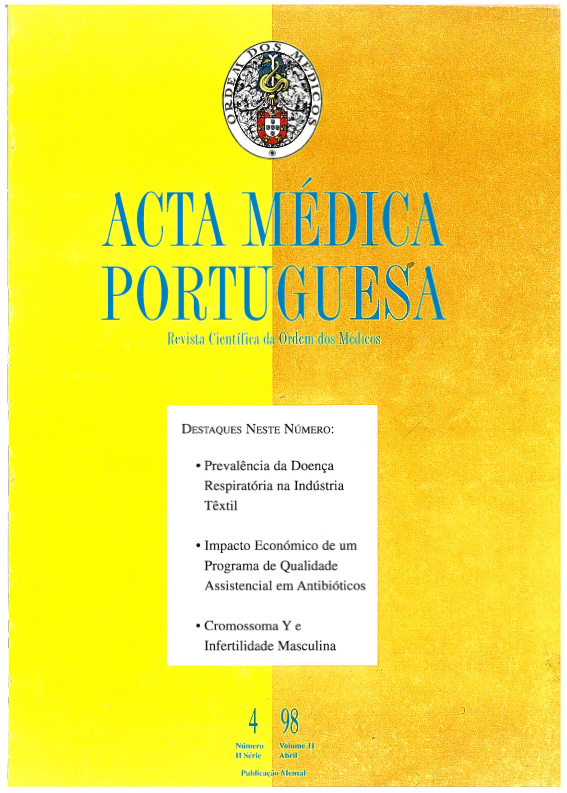Alimentação e Risco de Enfarte do Miocárdio. Um estudo caso-controlo de base comunitária.
DOI:
https://doi.org/10.20344/amp.2246Resumo
To evaluate diet as a risk factor for myocardial infarction.Community based case-control study.University Hospital, Oporto.First time consecutive cases of acute myocardial infarction (n = 100) and 198 community controls, older than 39 years and living in Oporto, were compared.Data were collected by trained interviewers using a structured questionnaire designed to obtain information on socio-demographic, medical and behavioural aspects, emphasising the description of diet and food habits (using a semi-quantitative food frequency questionnaire). Controls were selected by random digit dialing with a participation rate of 70%. Odds ratios and 95% confidence intervals (CI) according to quartiles of nutrient ingestion were calculated using unconditional logistic regression.Female controls presented significantly higher mean intakes of protein, omega-3 fatty acids, fiber, cholesterol and vitamin C. Male controls had a significantly higher mean daily intake of fiber, vitamin C, vitamin E, and carotenes. After adjusting for age, sex, education, body mass index, ethanol, smoking and total energy intake, there was a protective effect of vitamin C (OR = 0.2, 95% CI: 0.1-0.6, for the 4th quartile), vitamin E (OR = 0.3, 95% CI: 0.1-0.9 for the 4th quartile) and total fiber (OR = 0.3, 95% CI: 0.1-0.9) for the 4th quartile). No significant effect was found for trans-fatty acids, but there was a higher risk with increased energy intake.This study showed that diet has an important independent effect on myocardial infarction, a protective independent role for anti-oxidant vitamin C and E was verified.Downloads
Downloads
Como Citar
Edição
Secção
Licença
Todos os artigos publicados na AMP são de acesso aberto e cumprem os requisitos das agências de financiamento ou instituições académicas. Relativamente à utilização por terceiros a AMP rege-se pelos termos da licença Creative Commons ‘Atribuição – Uso Não-Comercial – (CC-BY-NC)’.
É da responsabilidade do autor obter permissão para reproduzir figuras, tabelas, etc., de outras publicações. Após a aceitação de um artigo, os autores serão convidados a preencher uma “Declaração de Responsabilidade Autoral e Partilha de Direitos de Autor “(http://www.actamedicaportuguesa.com/info/AMP-NormasPublicacao.pdf) e a “Declaração de Potenciais Conflitos de Interesse” (http://www.icmje.org/conflicts-of-interest) do ICMJE. Será enviado um e-mail ao autor correspondente, confirmando a receção do manuscrito.
Após a publicação, os autores ficam autorizados a disponibilizar os seus artigos em repositórios das suas instituições de origem, desde que mencionem sempre onde foram publicados e de acordo com a licença Creative Commons









